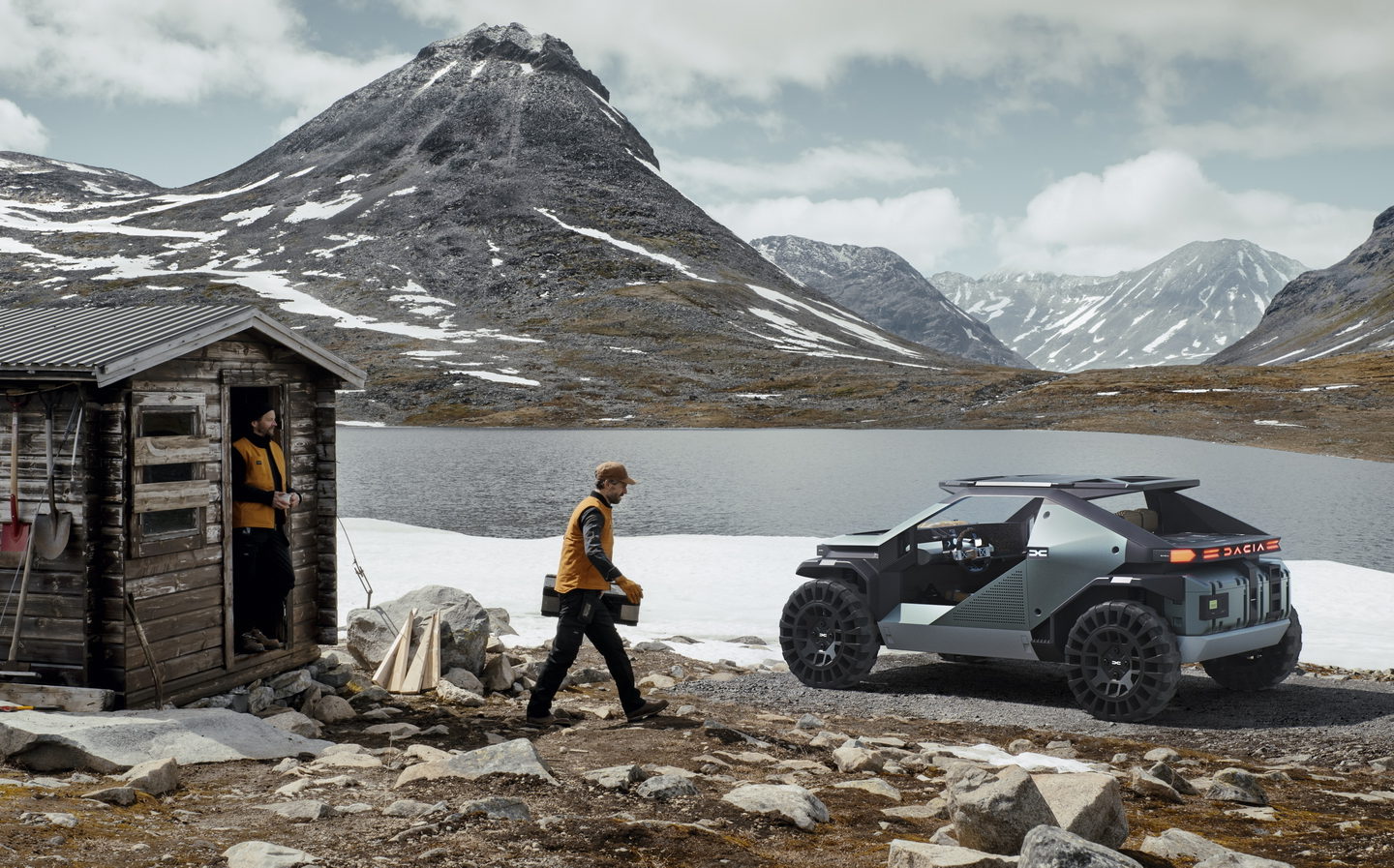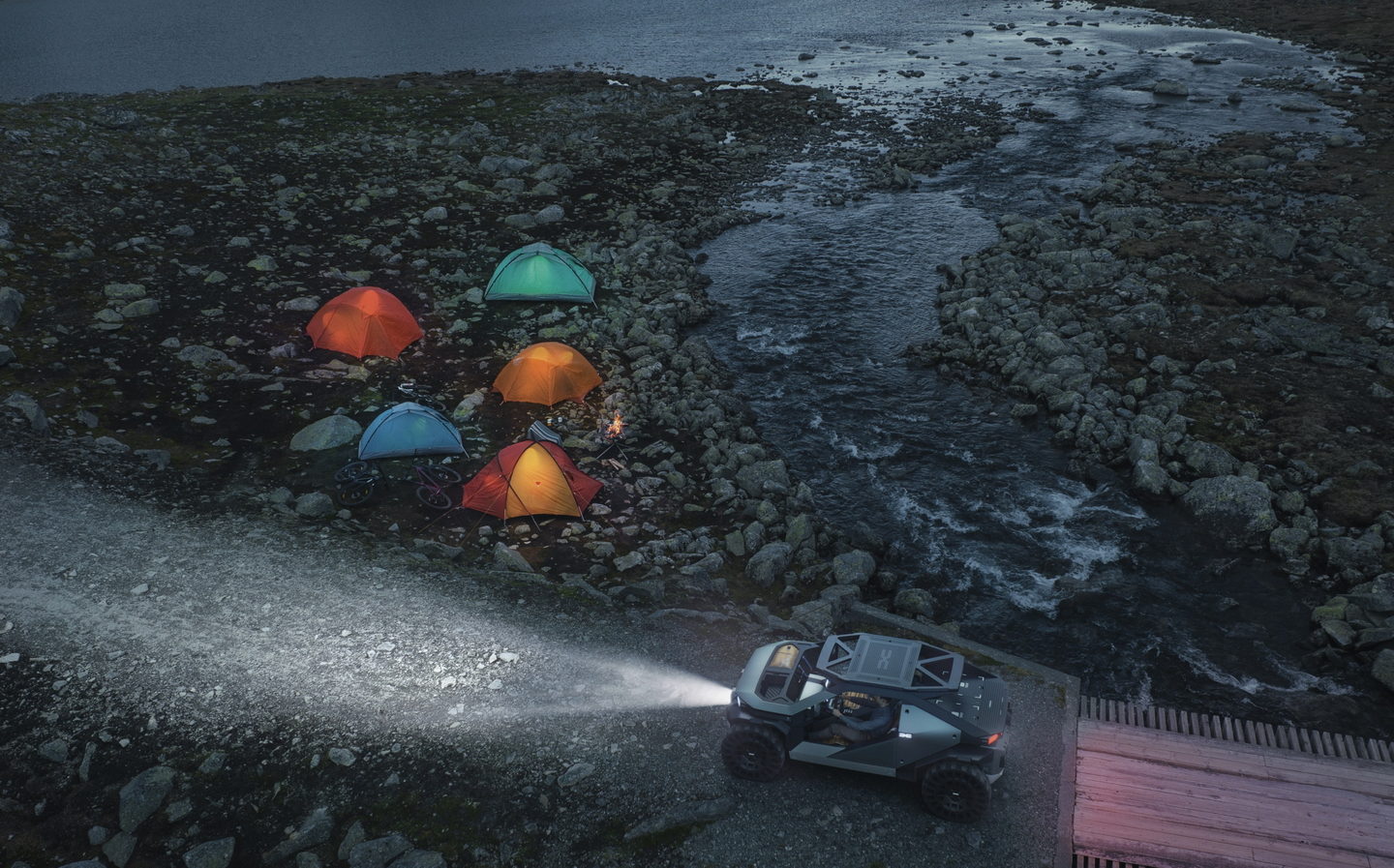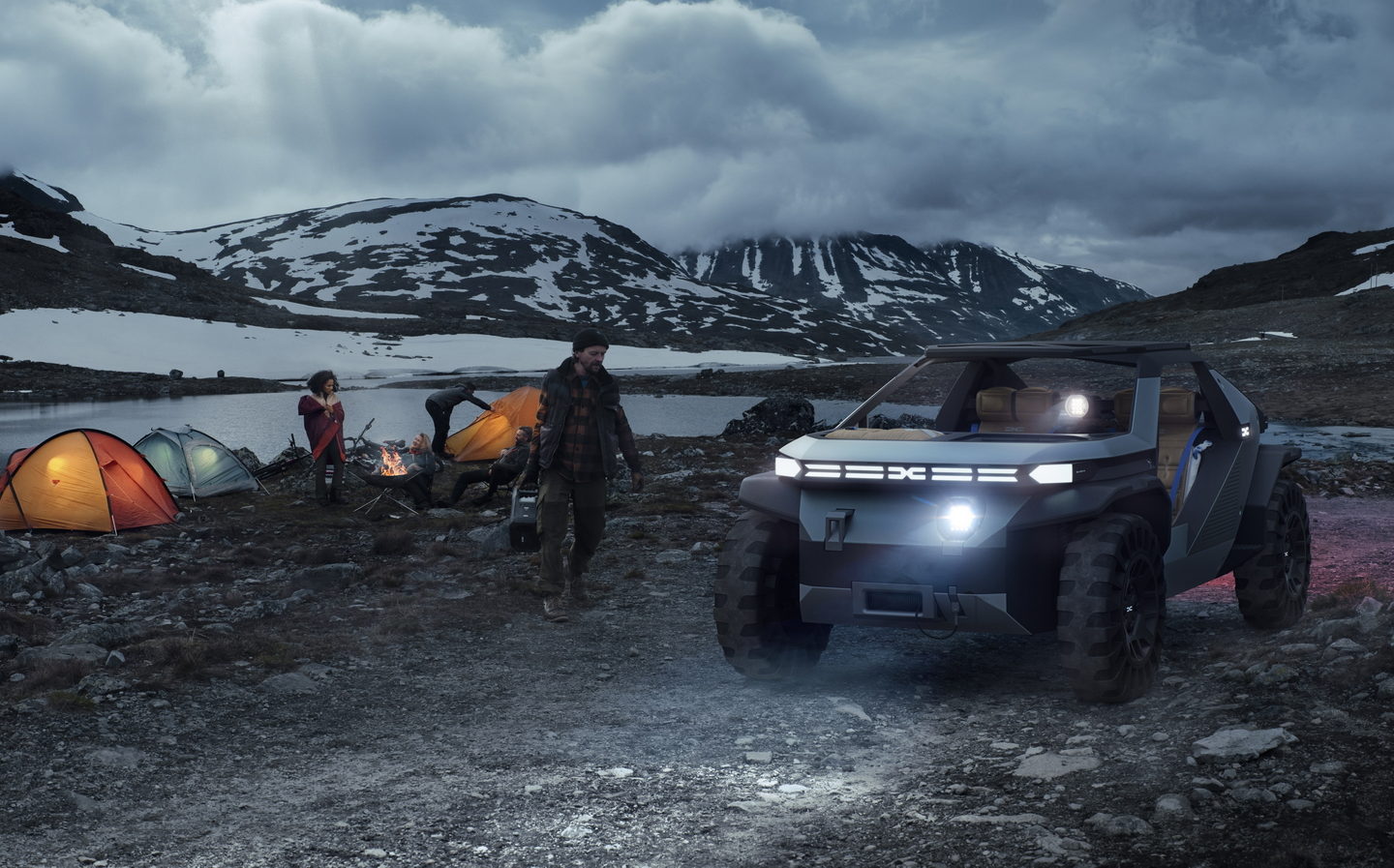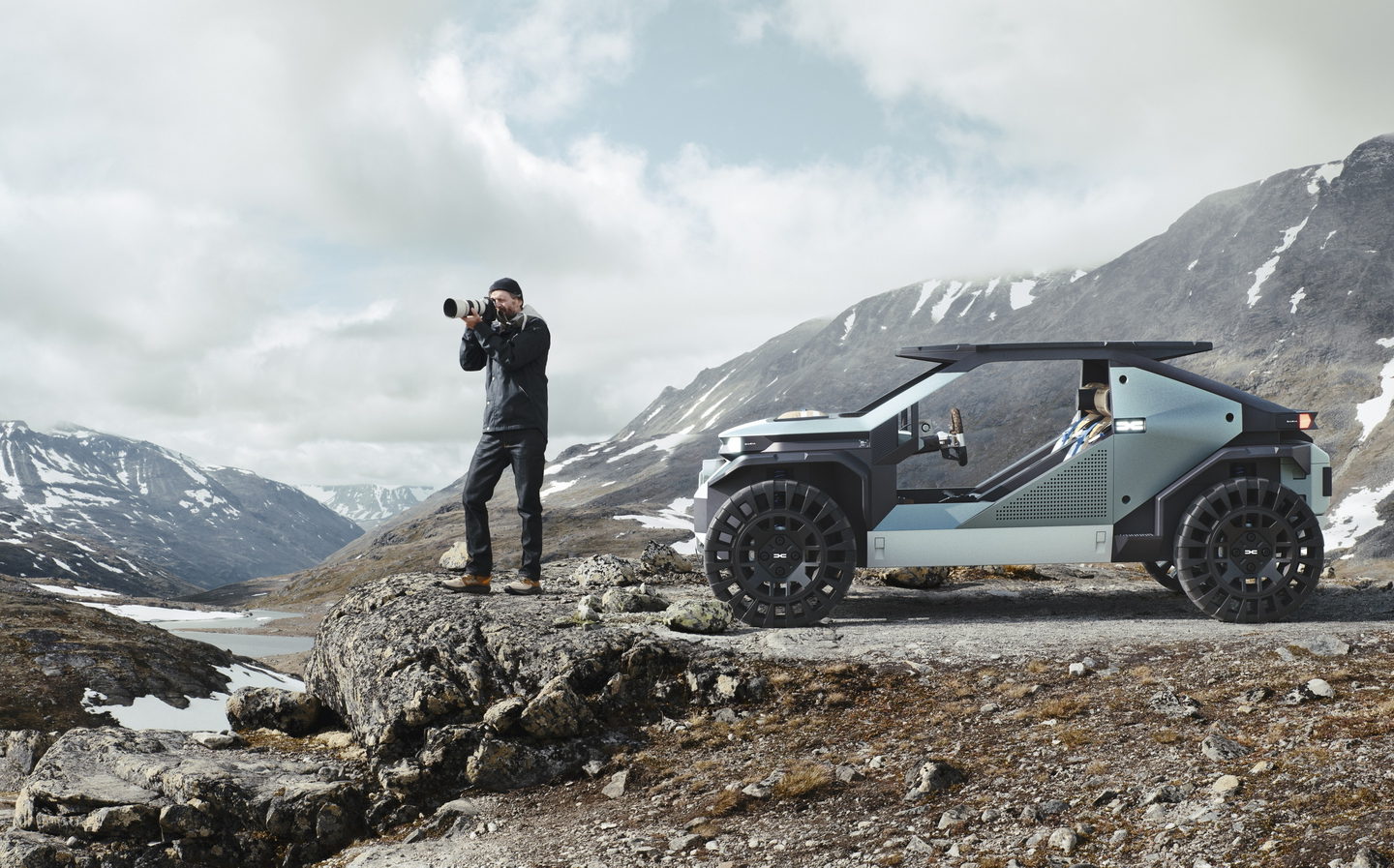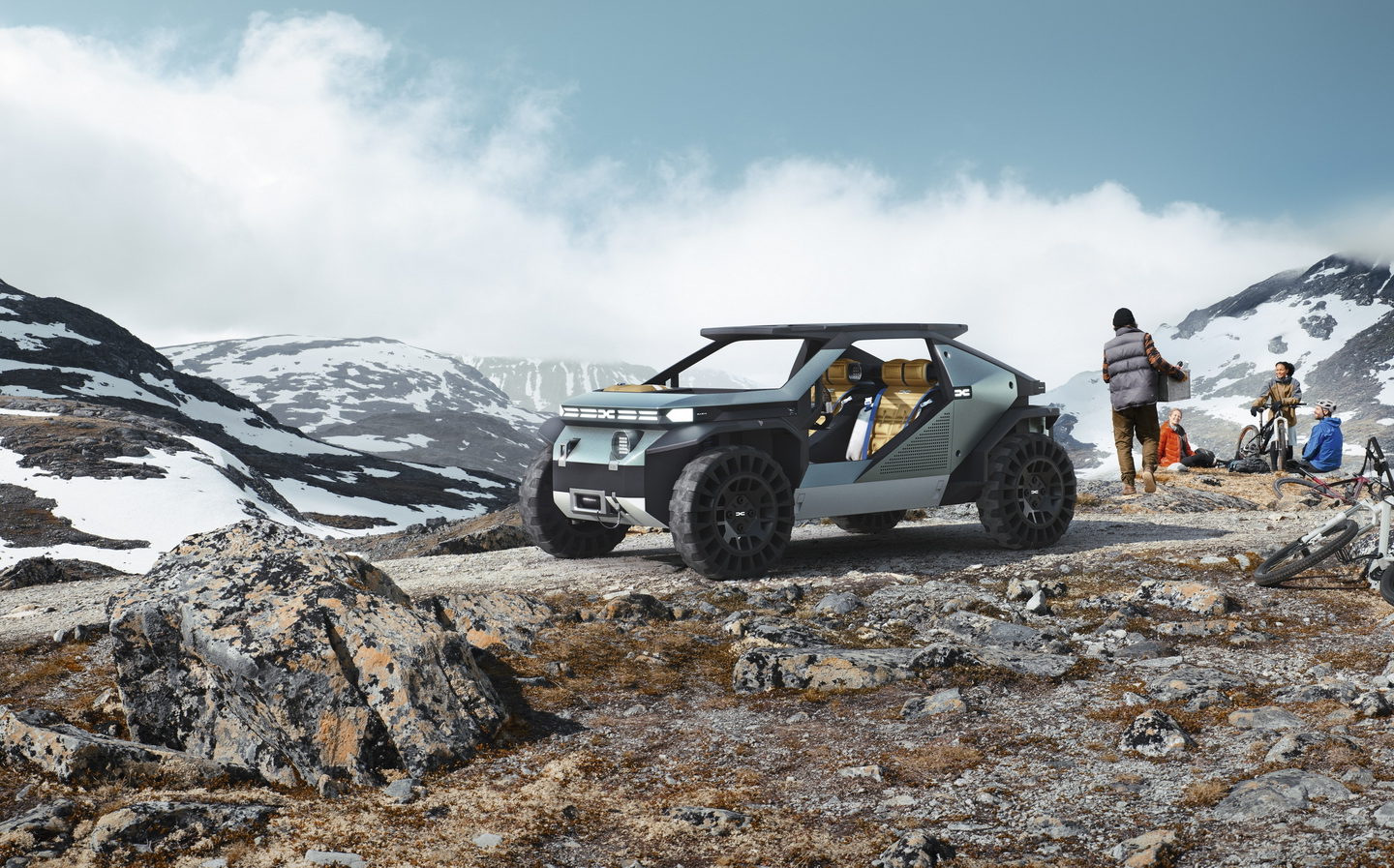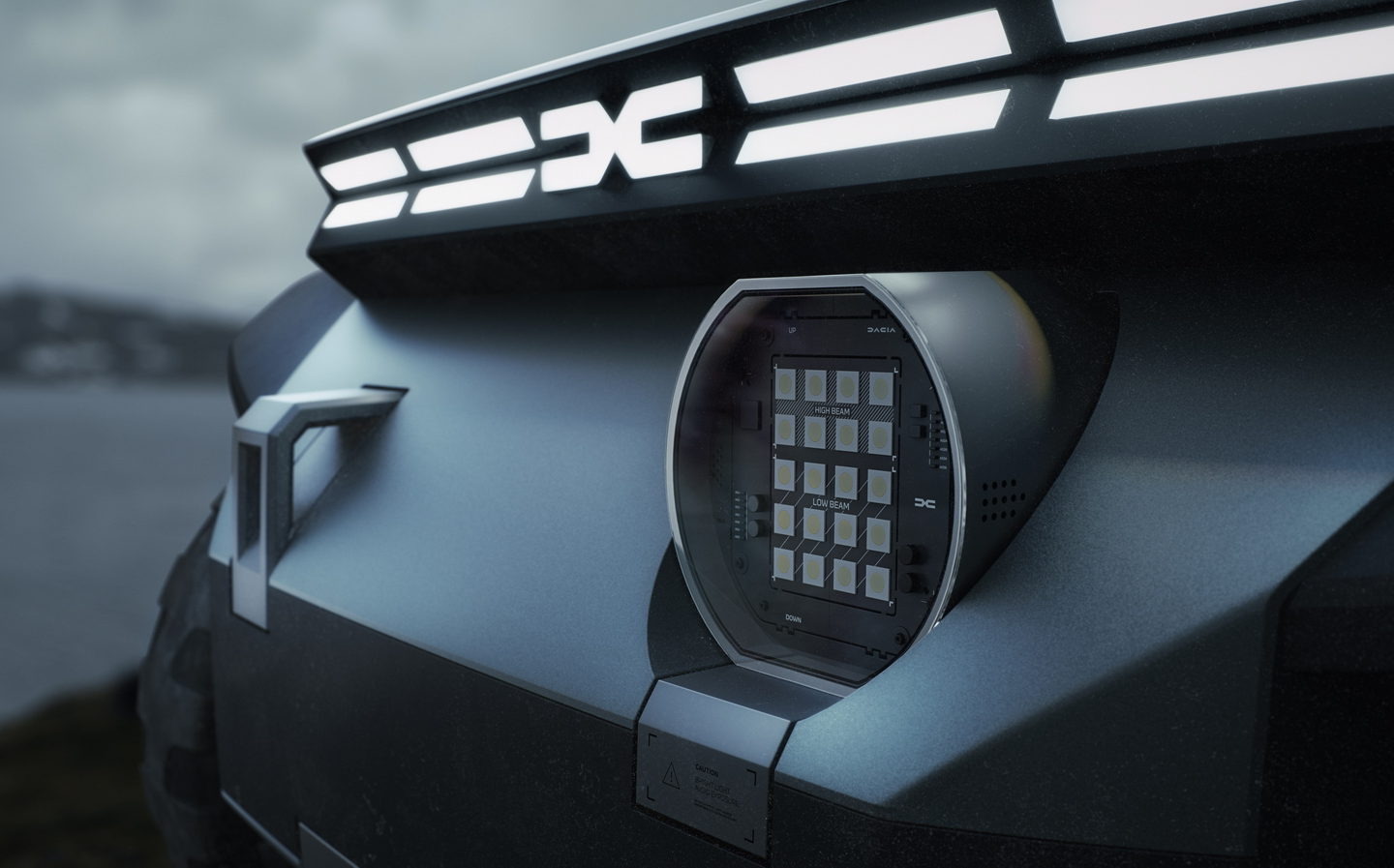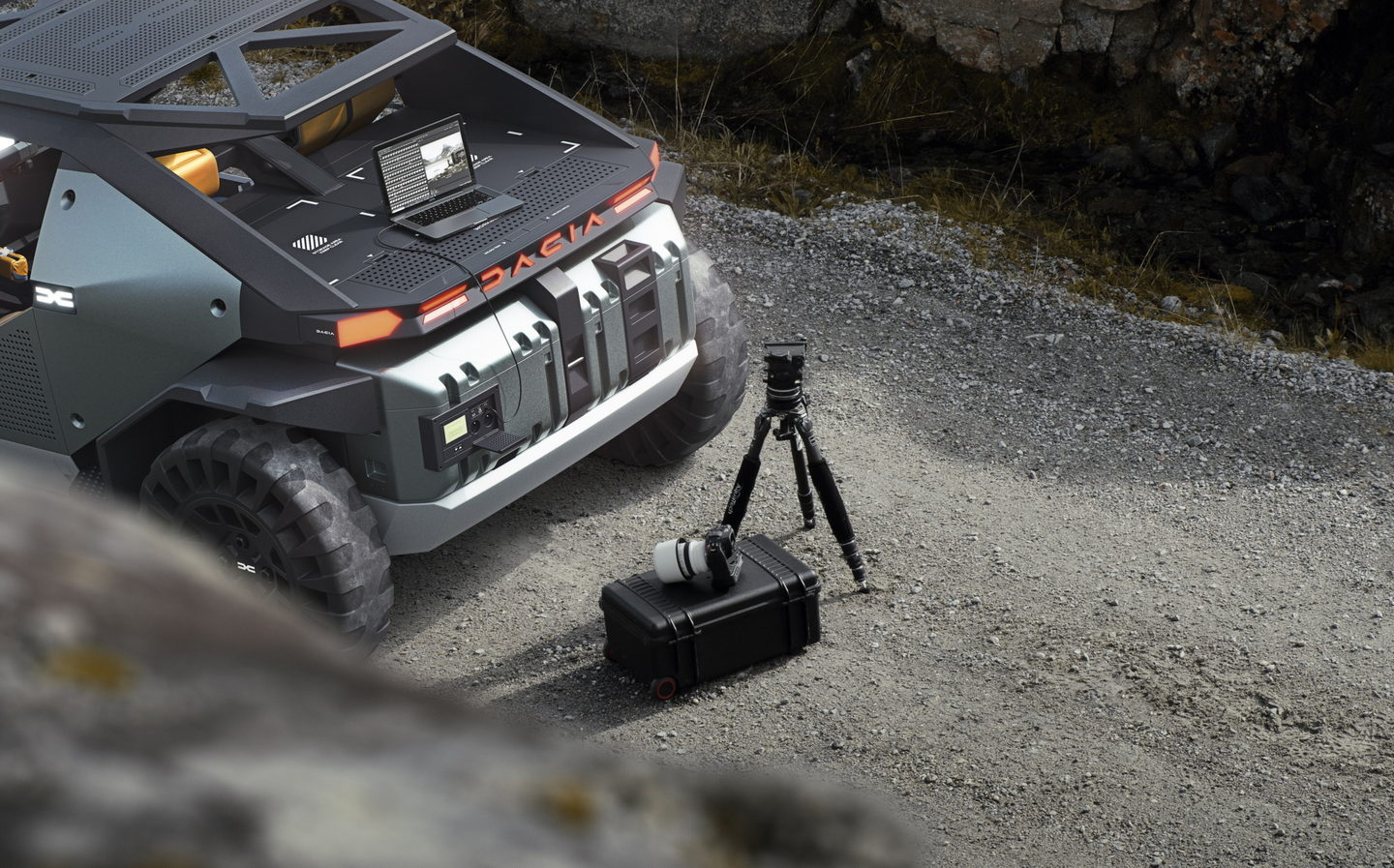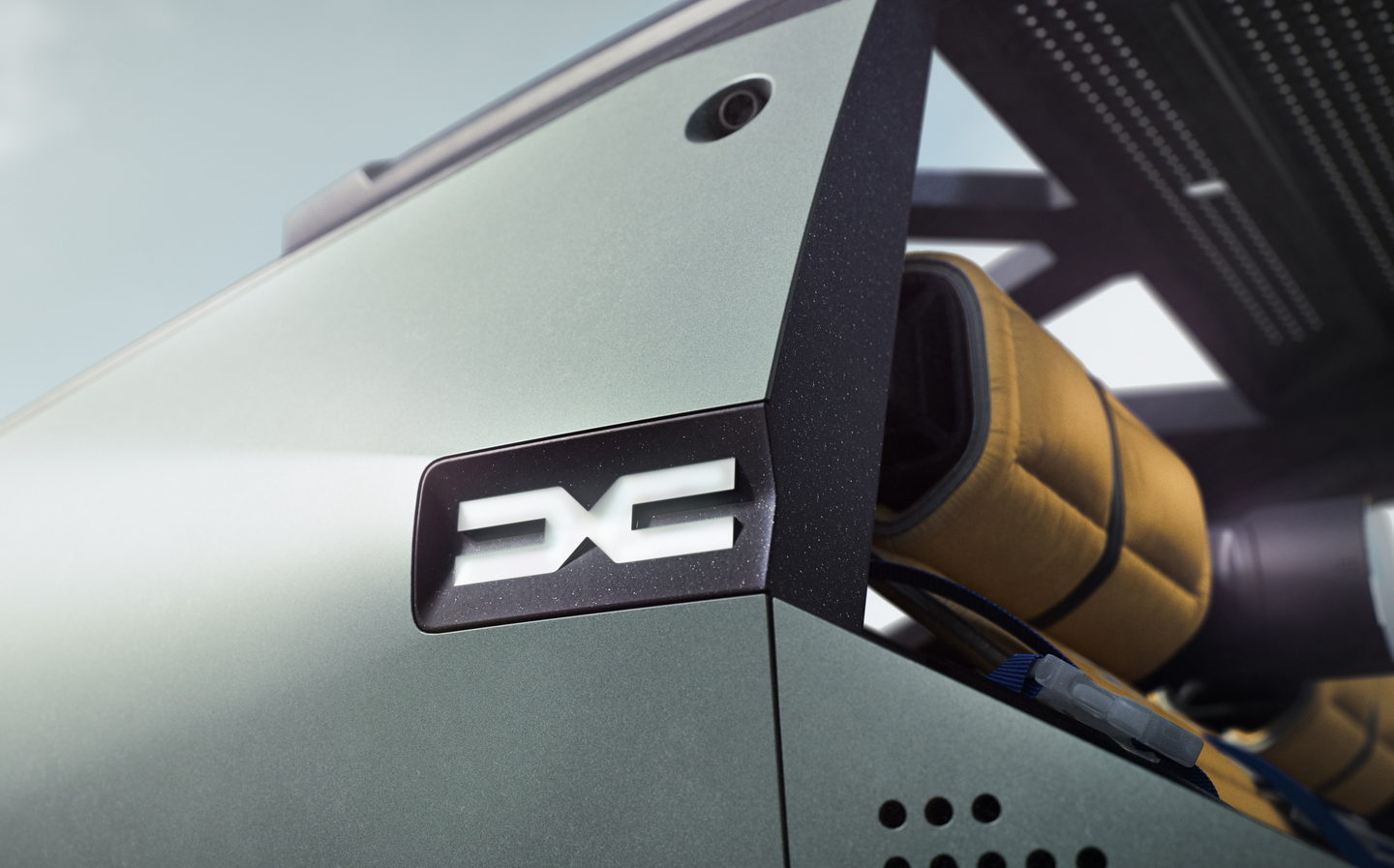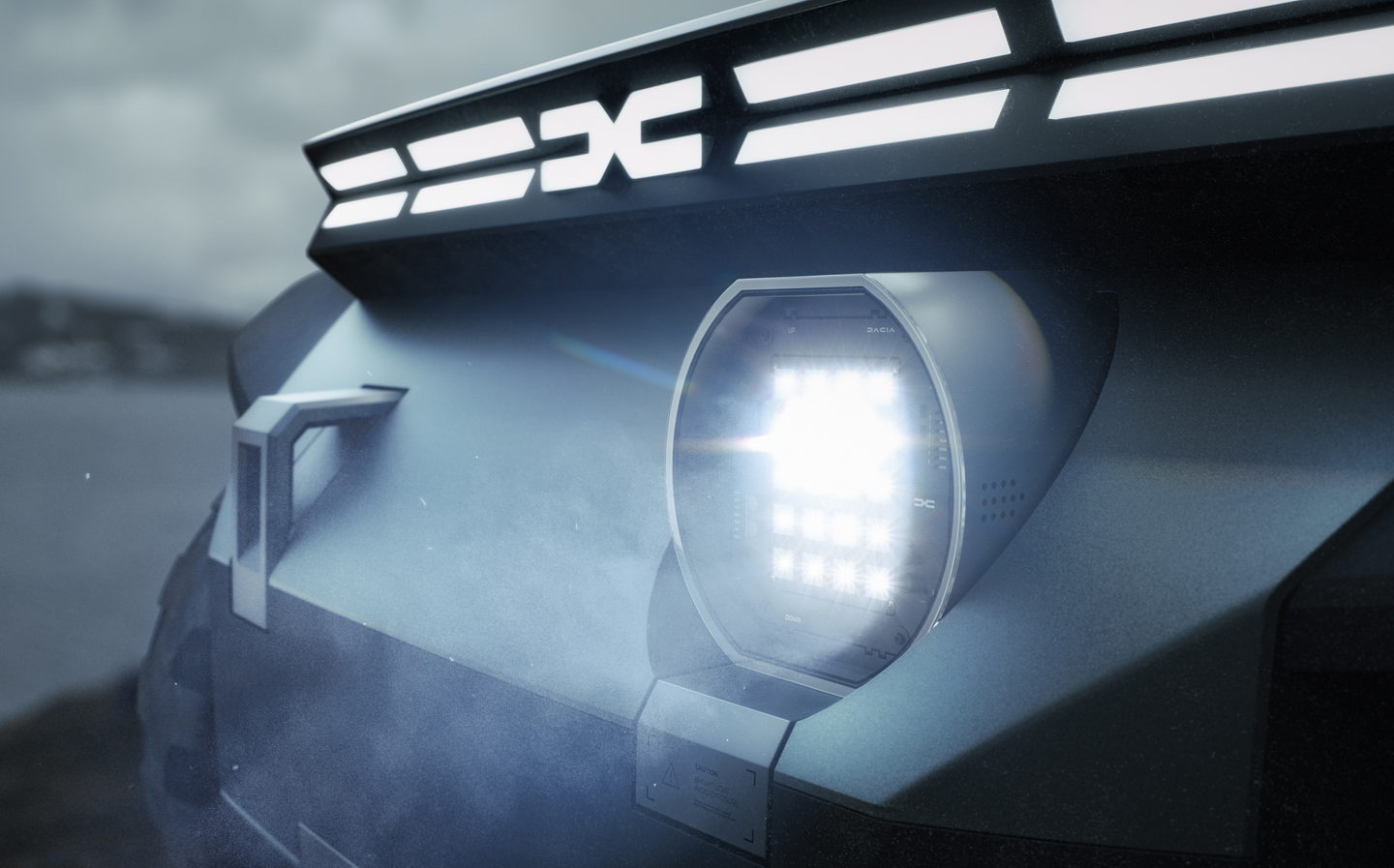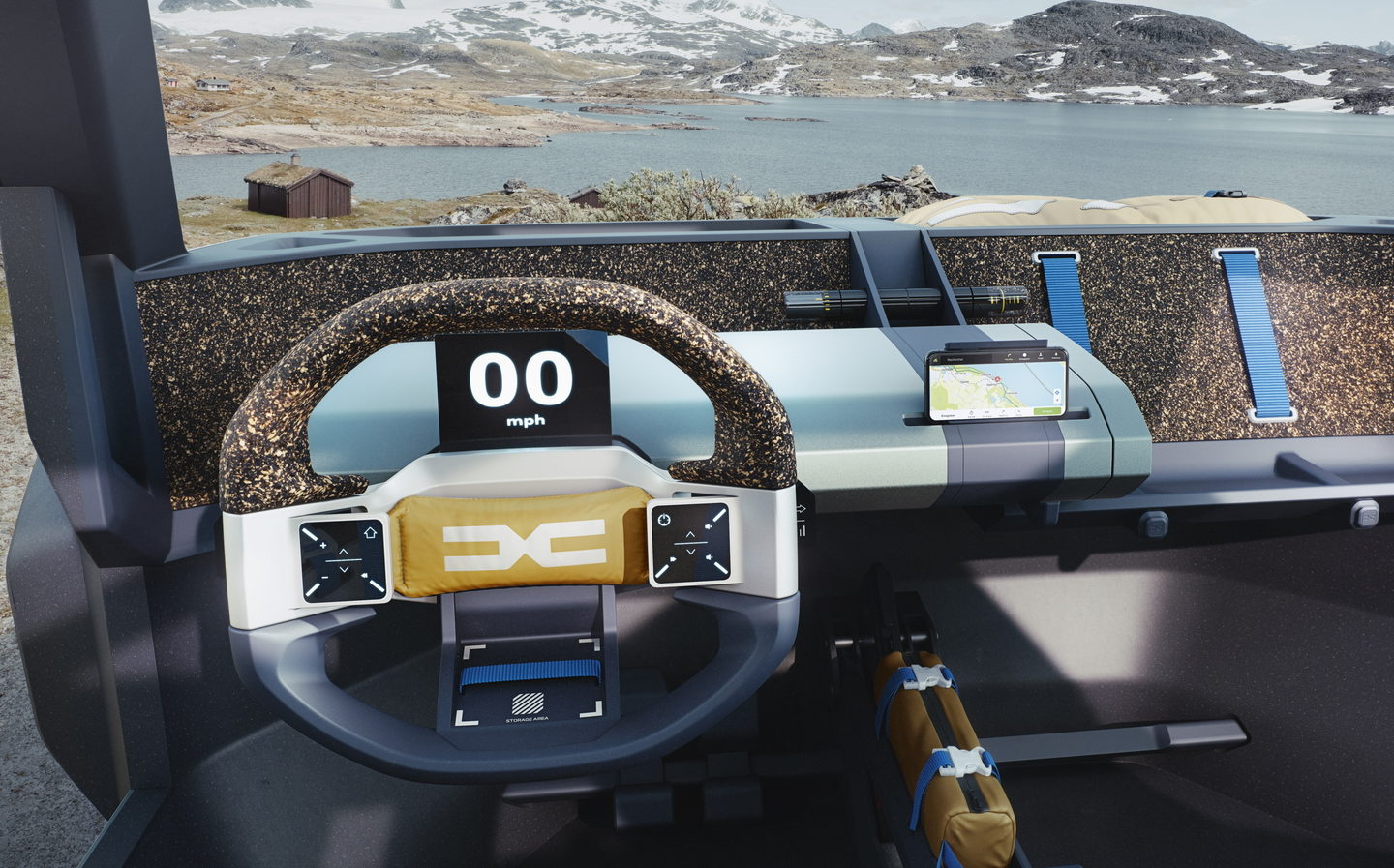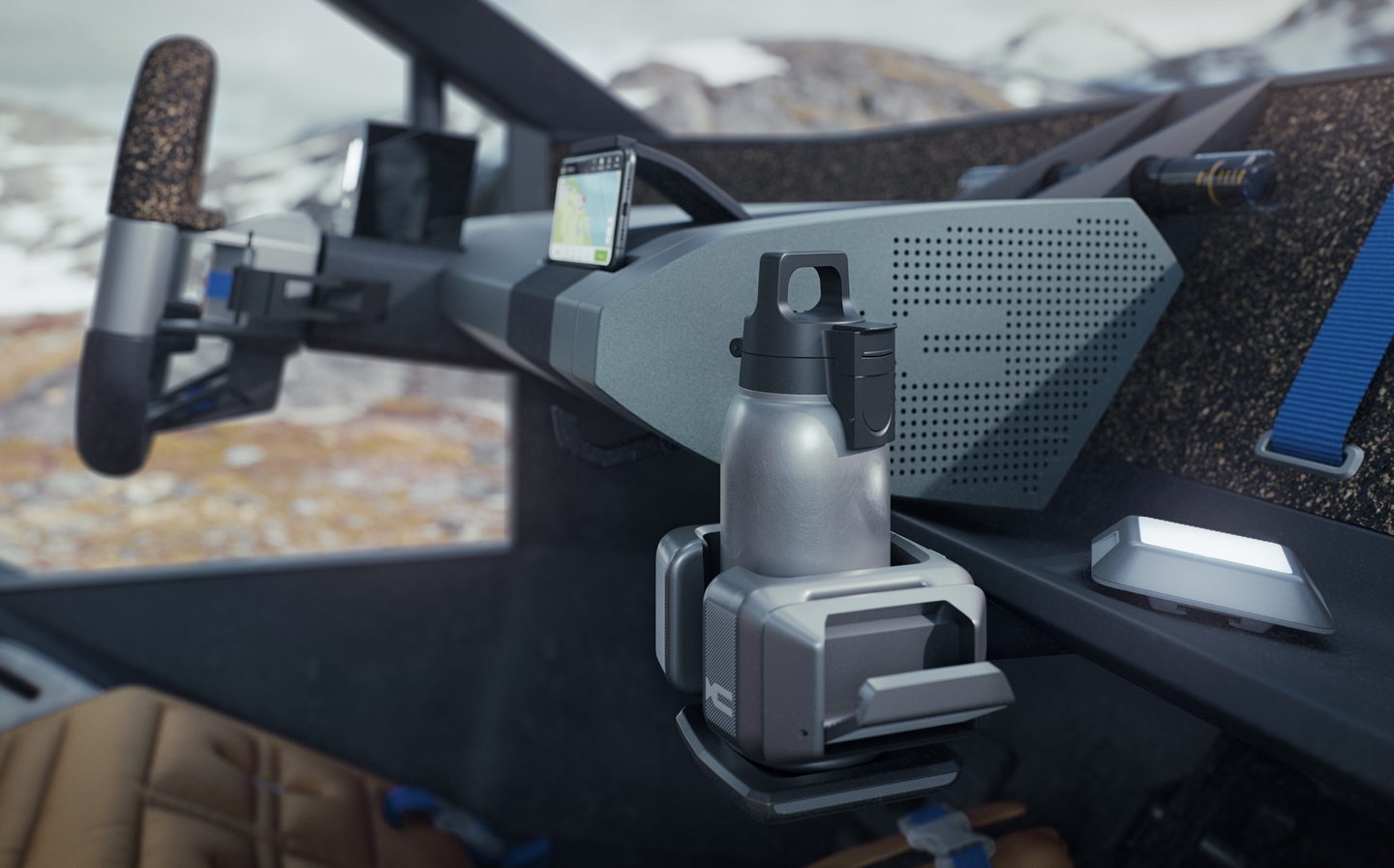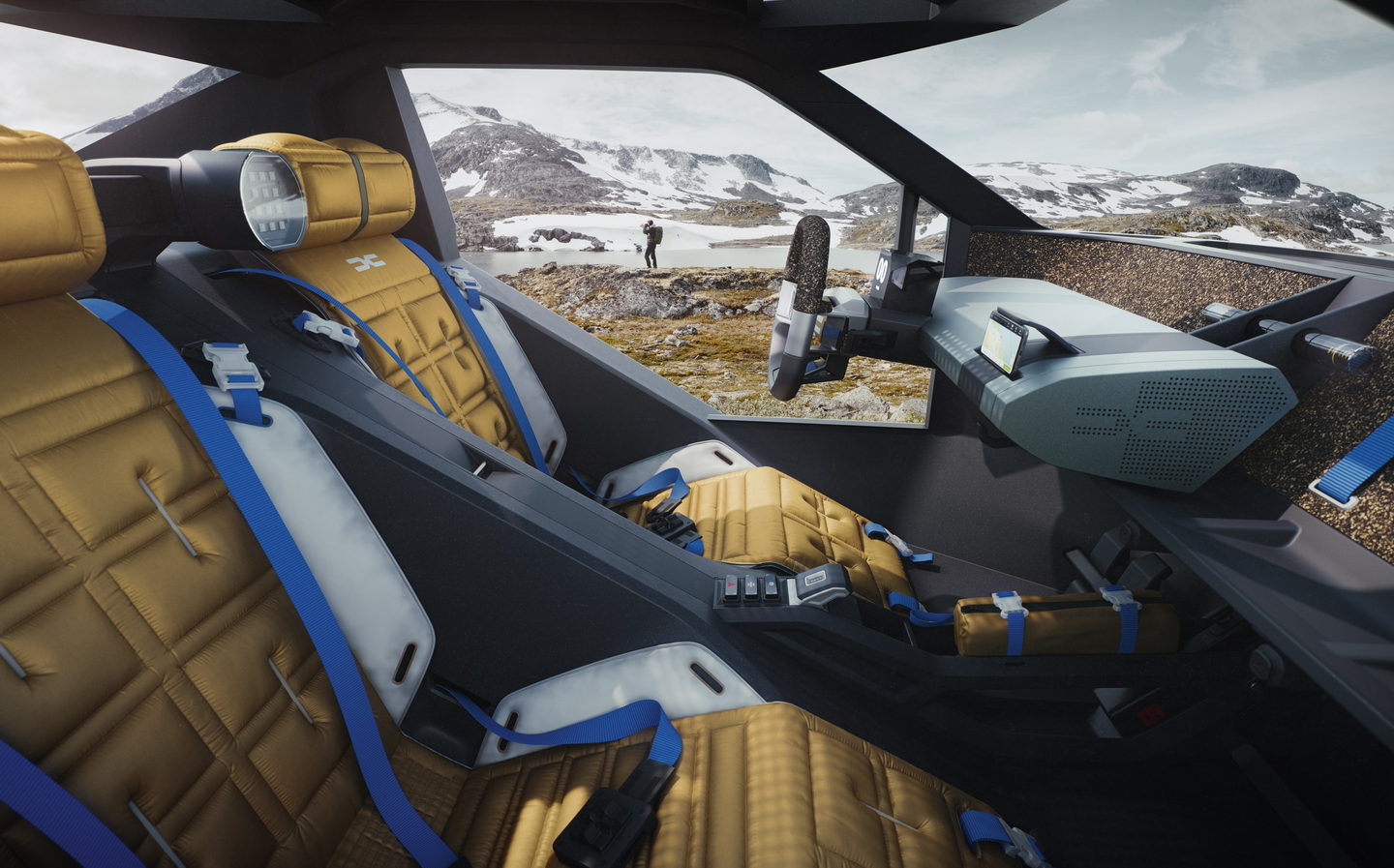Dacia Manifesto concept is a stripped-back off-road buggy showcasing sustainability ideas
Does not pre-figure any upcoming models
The spartan minimalism of Dacia’s Manifesto concept car, revealed this morning, hints not at future models from the budget-friendly car-maker but at some of the ways the company could potentially pare back and simplify its cars in future, in order to keep costs down.
While Dacia, may not include levels of spec as high as some of its rivals, the Manifesto takes things to the extreme, looking something like a moon buggy or Lego model, with no doors or windows — not even a windscreen.
This, the company says, is to create a closer connection between nature and the occupants (that’s one way of putting it), though there’s actually some method to this apparent madness — the company hopes to target customers with an interest in outdoor pursuits who are attracted to the brand because of cars such as the tough and relatively low-cost Duster SUV.
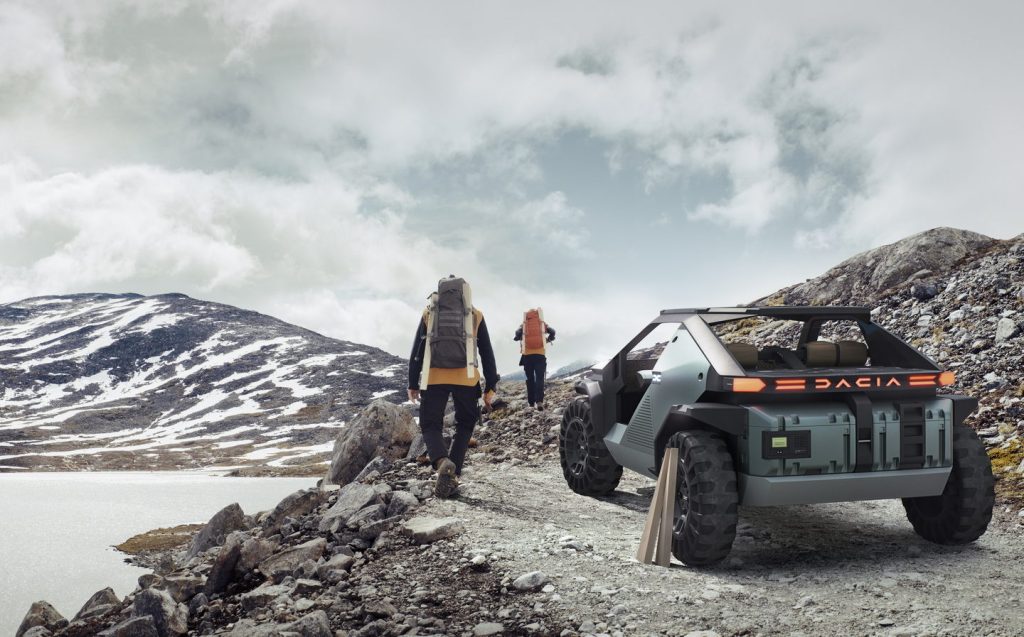
The Manifesto is definitely equipped to deal with outdoor pursuits, with permanent four-wheel drive, a hose-down interior, chunky wheels, a raised ride height and a tough plastic body made from a recycled polypropylene material known as Starkle, which has a flecked effect.
Recycled plastics, Dacia says, will play a big part in its models going forward. At present, 12% of the plastics used in the Duster are recycled, but the company is aiming for a target of 20% in future, including visible external parts.
The tyres in the Manifesto are airless and, according to Dacia are durable and puncture-proof and will last as long as the vehicle.
Although the Manifesto includes an illuminated strip of light below the base of the aperture where a windscreen would ordinarily be, there’s actually only one headlight (“Why use two if one provides all the light you need?” the company asks, rhetorically). That headlight can be detached and used as a powerful torch.
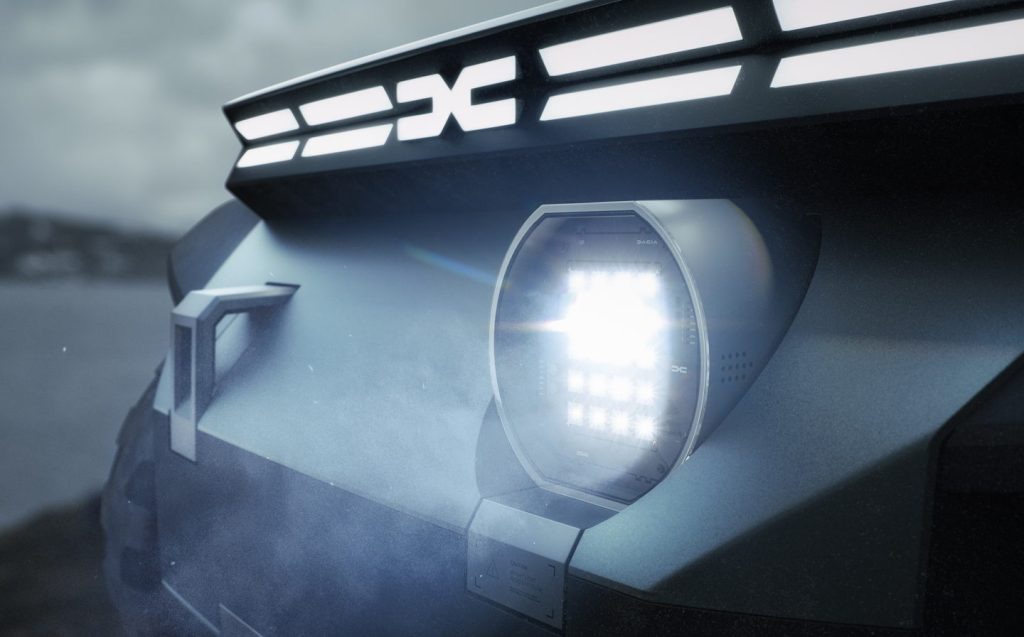
Up top, like Dacia’s current Jogger and Sandero Stepway models, a modular roof-rack means that the bars can be configured to take loads of all shapes and sizes.
The clever features continue inside, with the seat covers easily removed to double as sleeping bags, while the dashboard is finished in recyclable cork, all decorative trims removed.
Like the Jogger, instead of an infotainment screen, there’s a slot into which users can slot their smartphone to use as a multimedia system.
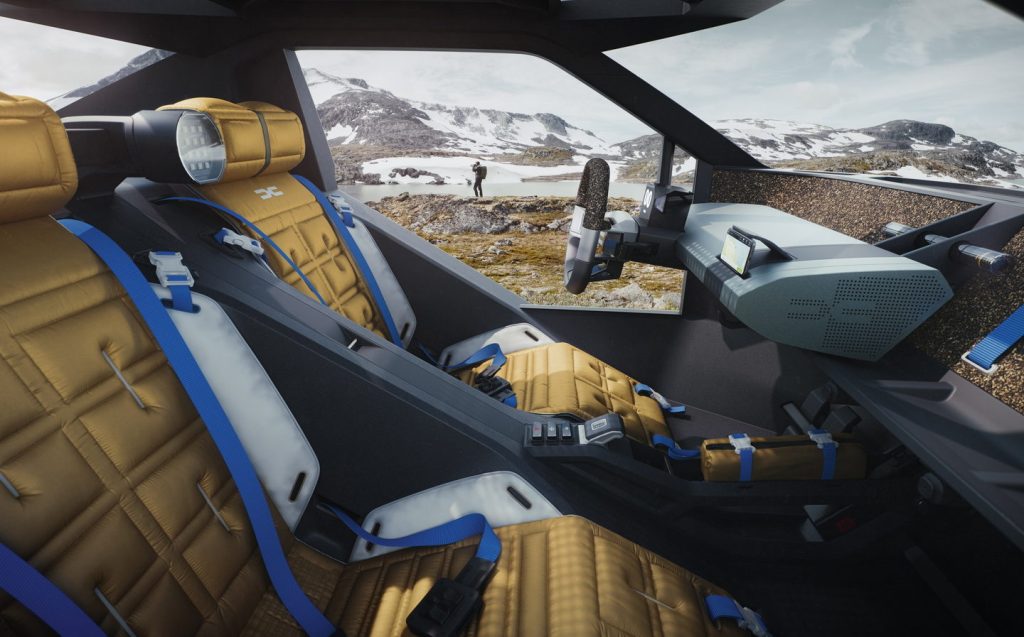
“Naturally, what is and is not deemed essential changes over time,” said the firm.
“Air conditioning was not seen as an essential 18 years ago, but it is today. Conversely, Dacia questions the point of fitting two or three screens in a car when there is a swift and smart way to pair your smartphone with the vehicle, evidenced via Dacia’s Media Control system.”
It’s this strategy of sticking to “the essentials” that will allow Dacia, it says, to keep costs down over time and keep its vehicles lighter and simpler, reducing their overall environmental impact.
Dacia hasn’t said exactly what’s powering the Manifesto, but it does include a “dedicated and removable battery” supplying power through a household outlet to lights, pumps or anything else requiring electrical power.
“We want to build a range of products that strengthens our brand promise, focusing on the essentials and adapting our vehicles for outdoor activities,” said Lionel Jaillet, Product Performance Director at Dacia.
“Beyond our models, we are also working on innovative features that match our customers’ need and lifestyles even more closely. Manifesto Concept is a ‘lab’ to try out and mock up new ideas. The version you can see today will keep on evolving as we keep on exploring!”
Related articles
- After reading about the Dacia Manifesto concept car, you might like to check out our review of the Dacia Jogger
- Take a look at Dom Joly’s review of the 2016 Dacia Duster
- And click here to see all the car makers’ electric vehicle plans
Latest articles
- Aston Martin Valkyrie AMR-LMH hypercar hits track ahead of 2025 Le Mans challenge
- Porsche has begun testing the electric Cayenne
- Cupra Leon 272 eHybrid 2024 review: Bigger battery, better tech … but is it a Cupra?
- Porsche 911 GTS 2024 review: Hybrid heresy or more Stuttgart genius?
- Extended test: 2023 Vauxhall Astra Sports Tourer GS PHEV
- Ford Capri revival has faced a lot of flak… but are buyers put off? Here’s what visitors to the Festival of Speed had to say
- F1 2024 calendar and race reports: What time the next grand prix starts and what happened in the previous rounds
- ‘No timeframe’ for how long Volvo’s returning estate cars will be on sale in UK
- Kia Picanto 2024 review: Updates add spice to cute Korean city car


